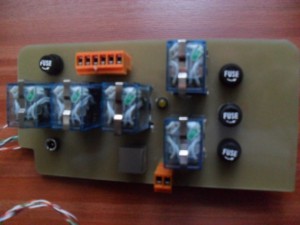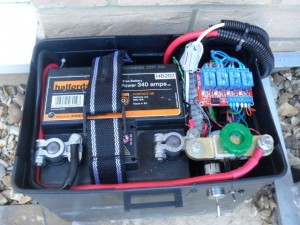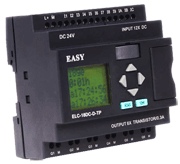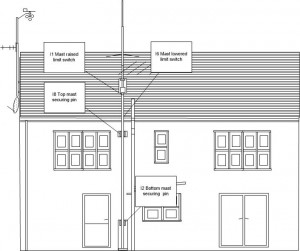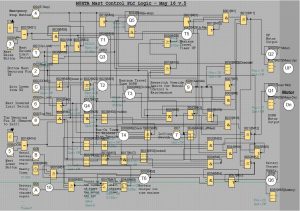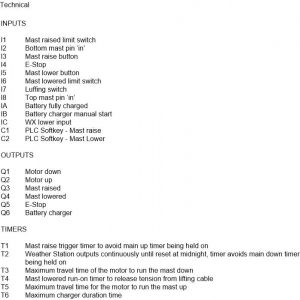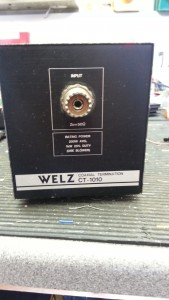Note – This is the starting point in my mast automation project, several things ‘evolved’ during the overall project, therfore as you read through this and get to the end of the Parts, you can see the changes, tweaks and additions which have improved the project.
===================================================
My mast has an winch to raise and lower the inner section of the mast.
This project is to fully automate the process and add a level of intelligence into the mix, my requirements list is:-
- Automatically stop the motor at the top or bottom
- Run-On when mast lowered to release tension from cable
- If bottom mast inner securing pin is in – Stop mast from raising or lowering
- Disallow inputs whilst the motor is either lifting or lowering
- Safety timer on the motor operation should a limit switch fail
- Means to stop holding an input button increasing the motor run time
- Don’t lower the mast if the luffing pin is removed
- Override to allow either a pulsed automatic operation or manual hold for up & down ignoring limit switches
- Emergency stop
- All timing sequences reset on restoring emergency stop or override to prevent motor operation
- Interface with WX Station to automatically lower
- Visual display of status – what is doing what
- Automatic battery charging after a number of counted operations or weekly – whichever comes first
- Battery charging does not interfere with solar panel charging
I was going to use relays, and made a start on the construction, but the more I thought about interlocking and timers the more unrealistic this option became.
The relay unit currently in use which works fine is shown below, two of the relays are for the raise and lower switches, the other two are for overrides.
My plan is to use a Programmable Logic Controller (PLC) which needed to have 12 inputs and 4 relay outputs.
I found a company on the internet called Audon.co.uk, the model chosen was ELC-18DCD-R-U at £69 ex VAT and I also bought a RS232 programming lead for just under £20 ex VAT, the PLC has a voltage range from 12 to 24v DC is very compact and will do everything I need and more.
A major plus was the programming software is free and very easy to use.
Link to PLC Software Link
Link to PLC Manual
The drawing shows the sensor positions, currently the mast only has up and down limit switches fitted, the upper and lower securing pin detection will be fitted when the parts arrive from the other side of the world.
The way of working will be:
Normal Up & Down
Momentary pressing of the down button on the remote hand held winch unit, will fully lower the mast, pressing the up button will do the reverse.
Luffing the Mast
Luffing (Tilting down) of the mast for maintenance will involve setting the PLC input switch to Luff, this will only lower the mast if the mast is lowered, the lower securing pin is in and the upper securing pin is out.
The logic plan shown below has been imported from the software program into Visio and I’ve added some idents to make it easier for me to fault find at a later date.
Descriptors for the idents is below.
The next stage of the project is to mount the PLC in an enclosure and fit the securing pin sensors, please see Part 2 HERE.

